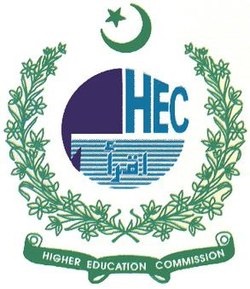PROBING AMPLIFICATION, DOMESTICATION, AND UNTRANSLATABILITY IN THE URDU TRANSLATION OF SHAKESPEARE’S OTHELLO
DOI:
https://doi.org/10.61506/01.00024Keywords:
amplification, domestication, untranslatability, cultureAbstract
This study explores the projection of amplification, domestication, and untranslatability in the Urdu translation of Shakespeare’s Othello by Anayatullah Dehlvi. The traditional approaches to translation are realized to hide cultural depiction and naturalness of language. They are regarded mathematically inflexible, which conceive one to one relation in languages. They are eclipsed and translation in the recent era is viewed with the lens of broader spectrum. In this descriptive study, the researcher uses the purposive sampling technique to select various extracts from the Urdu translation of Othello representing amplification, domestication, and untranslatability. The qualitative analysis reveals that the role of these strategies is enormously helpful because of connecting the source and target cultures. Nida’s modal of functional equivalence is used as theoretical framework. It is also realized that untranslatability is a cultural phenomenon, which sometimes crops up on the grounds of religion and ethics. In the Muslim cultures, translation of sexuality and nudity is categorically discouraged. On these grounds, it is recommended to incorporate these strategies in the Urdu literary translations to reduce foreignness and unpack the cultural discourses
References
Baker, M. (1993). In other words: a course book on translation. Beijing: Foreign Language
Teaching and Research Press.
Bassnett, S. (1992): Translation studies. London and New York: Methuen.
Catford, J. C. (1965). A linguistic theory of translation: an essay on applied linguistics. Oxford University Press: London.
Culler, J. (1976). Saussure. Collins: Glagow.
Dehlvi, A. (2000). Urdu translation of Othello. Lahore: Print Line Publishes.
Gorlée, D. L. (1994): Semiotics and the problem of translation. Amsterdam: Atlanta, G.A.
Mary, S. H. (1988). Translation studies: an integrated approach. Amsterdam: John Benjamin Publishing Company.
Munday, J. (2001). Introducing translation studies. Routleghe: London and New York.
Newmark, P. (1981). Approaches to translation. Pergamon: Oxford.
Newmark, P. (1988). A textbook of translation. Prentice Hall: London.
Nida, E. A. (1993): Language, culture, and translating. Shanghai: Shanghai Foreign Language Education Press.
Nida, E. A. (1979): Componential analysis, The Hague, Paris, New York: Mouton Publishers.
Nida, E. A. (1966): A synopsis of English syntax. The Hague: Moutin.
Nida, E. A. (1964). Towards a science of translating: with special reference to principles and procedures involved in Bible translating. Leiden: Brill.
Nord, C. (1997). A functional typology of translations. In: Trosborg, Anna. (Ed.), Text Typology and Translation. Amsterdam: John Benjamin Publishing Company.
Peter, N. (2001). Approaches to translation. Shanghai: Shanghai Foreign Language Education Press
Sapir, E. (1956): Culture, language and personality. Berkeley & Los Angeles: University of California Press.
Shuneng, L. (2006). A course book on English-Chinese translation. Beijing: Higher Education Press.
Shuneng, Z. (2012). A coursebook for Chinese-English translation skills. Beijing: University of International Business and Economics Publishing House.
Wanli, L. (2012). On the study of no-equivalence in English-Chinese translation. Beijing: Journal of Beijing City University, 3, 76-79. Retrieved from https://www.academy publication.com/issues2/tpls/vol07/12/17.pdf
Wenling, Z. (2005). Application of no-equivalent theory in English idioms translation. Hefei: Journal of Anhui University of Technology, 3, 58-59.
Xiabin, H. (2005). Can we throw ‘equivalence’ out of the window? Translating Today Magazine (4), 18–19. Retrieved from https://journal.lppmunindra.ac.id/index.php/ Deiksis/article/view/547.


